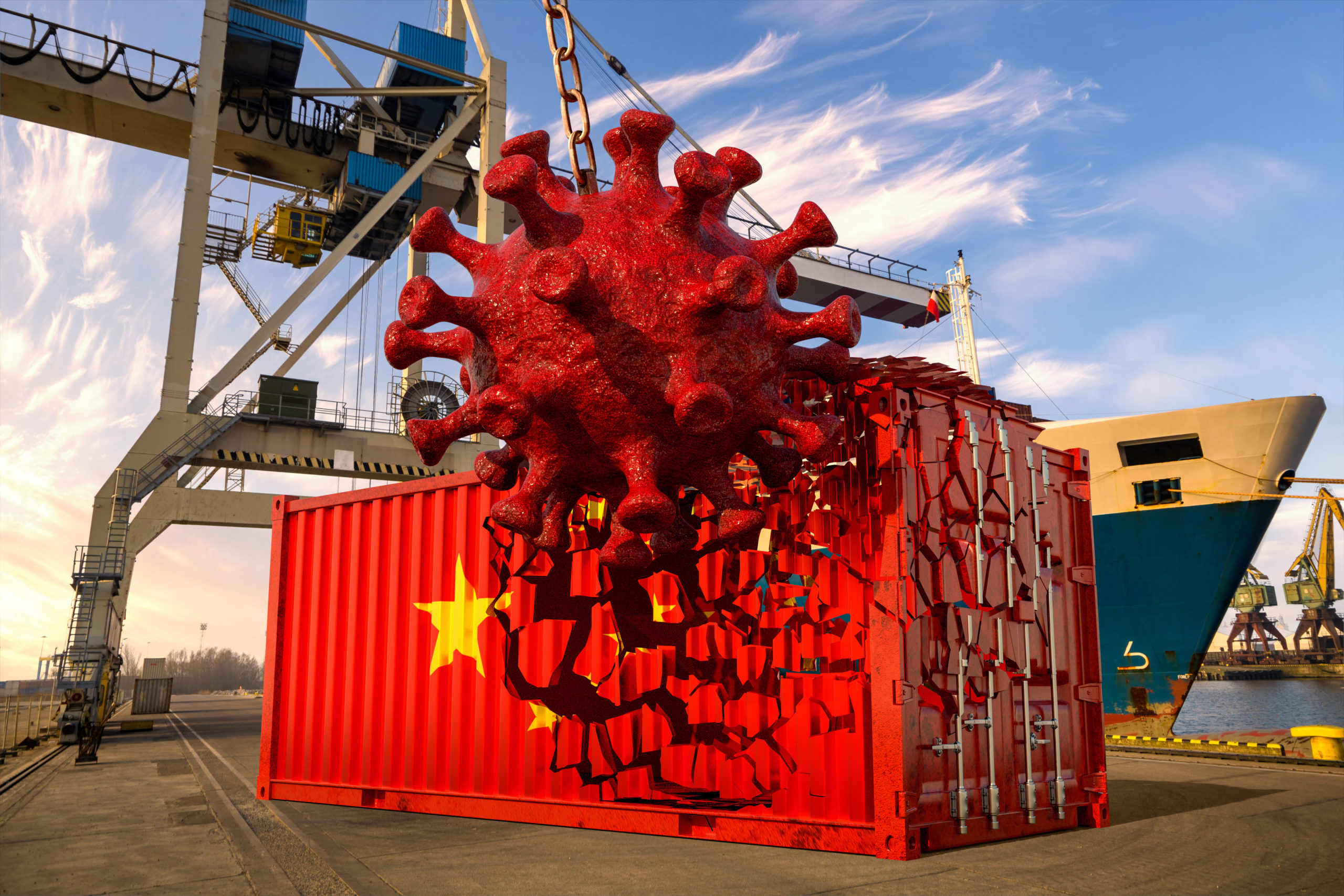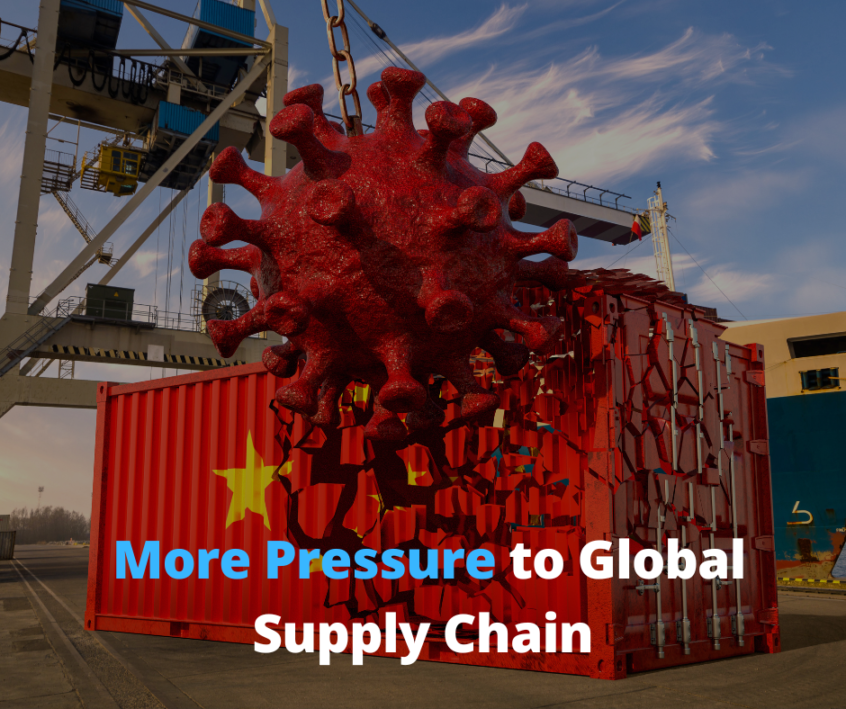
Key impacts and risks
It seems that Shanghai is back to quarantine, and the global supply chain is squeezed consequently. The past week has seen mass quarantine measures. These include the closure of highways meaning that trucks carrying loads bound for export are not finding a way through. Yet, orders for cargo bound for the West Coast in the USA have picked up after a period of trending downwards. The West Coast ports have started processing containers, albeit at a modest pace. Meanwhile, the Gulf and East Coast ports are feeling the pressure.
Challenges after coming through the pandemic
Some China Post workers are unloading parcels of necessities which creates a sense of urgency and siege for the residents that are once again quarantined at home. The Orient Star Group, is a logistics company, reports the beginning of backlogs. Many containers, trucks, and cargo find it difficult to enter the Shanghai terminal. These patterns have been logged by the Supply Chain Heat Map, created by CNBC, to provide regular up to date information about the logistics industry.
The Supply Chain Heat Map was created with the participation of 13 of the top logistics and maritime service providers. Investors can use the map to assess and make inferences from inventory flows in real-time. For example, one of the facts coming out of the heat map is that many clients are changing loading ports from Shanghai to Ningbo and alternative smaller ports on the Yangtze River. Consequently, the Port of Ningbo is now showing signs of stress and congestion, following its role as an alternative to Shanghai.
Covid-19 cases are reappearing in China
Local reports indicate that Covid-19, which seemed to have dissipated in China, is making a comeback. The authorities are responding with a zero-tolerance policy which includes quarantines and shutdowns. Because of China’s position as a prominent manufacturer and exporter, the supply chain is feeling the effects of these conditions. Now that manufacturing and production had resumed in Shanghai, it was anticipated that things would eventually return to normal in the supply chain. However, the new quarantines mean that drayage and transportation will have negative impacts.
According to DHL Global Forwarding, there are still significant problems when finding truckers going to and moving out of Shanghai to service the supply chain on both ends. The previous lockdowns and shutdowns led to a shortage of raw materials. Companies such as Tesla and Volkswagen were struggling to continue operating. Prior to the current restrictions, drivers were still mandated to provide a 48-hour negative Covid-19 test result that was nationally recognized. Additionally, they required a traffic permit. Moreover, local authorities demand that drivers take tests on the highways and in local centers.
Rules that challenge the supply chain and its participants
Industry experts like Akhil Nair of Seko Logistics are wary of bureaucratic testing procedures slowing traffic and putting off potential drivers. Indeed, many drivers are now cautious about taking on jobs that involve passing through Shanghai. That means that capacity to transport and process goods will likely be challenged in the immediate future. Certainly, few are predicting a quick return to the pre-lockdown volumes. These restrictions hit Shanghai at a time when trucking capacity had recovered to around 80% of its standard.
The new quarantines might hamper that progress. Meanwhile, the Orient Star Group is reporting a pickup in the volumes coming through the West Coast. This comes after a period of downward trends. Nevertheless, the new increases represent a forward-looking indicator of the kind of container pressures that logistic experts predicted. Additionally, the trend for containers bound for the East Coast is stable and strong. Nevertheless, it remains to be seen how the crisis in Shanghai will add to these volumes and pressures.
A strict regime meant to prevent a new outbreak of Covid-19
Reports indicate that in 15 out of 16 districts located in Shanghai, people are being ordered to test for Covid-19. This demand is a response to the emergence of the Omicron variant of the Covid-19 virus, which is prone to high infectivity and spreading. Indeed, five districts have barred residents from leaving their homes so that the disease can be contained. Some of the affected districts are hubs of manufacturing for major companies. For example, Pudong hosts Tesla with its Giga-Factory. Other big names in Pudong include Advanced Micro-Fabrication Equipment, SAIC-GM, Bosch, Siemens, SC Johnson, Thermo Fisher, L’Oreal, Covestro, and Merck.
Another area that has been impacted is Xuhui, a district strongly associated with chemical manufacturing. Additionally, some major brands have noted that the Zero-Covid policy has negatively impacted their access to materials. Some brands that have indicated challenges include Volkswagen, Sony, and Apple. Many manufacturers of electronics and semiconductors are based in the Jing’an District, which is also impacted by the latest measures.
Ports in the USA anticipate lots of congestion
As West Coast cargo creeps up, the ports are slowly processing import containers. This slow-paced processing is due to the lack of trucks and rail options. These trucks and rail containers are being used as makeshift warehouses. There are reports of congestion in California, Long Beach, and Los Angeles. These congestion reports have affected the Port of Oakland as ocean carriers are skipping it to make time on their tight schedules. Overall, there is an impact on the number of US export containers leaving the port.
To regain control over the situation, logistics managers are moving more containers to the Gulf Coast and East Coast. Unfortunately, that solution also means that those ports are slowly getting clogged. Mirko Woitzik of Everstream Analytics says that congestion (as measured by the number of waiting cargo vessels outside major ports) has worsened on the Gulf Coast and East Coast when compared to the West Coast. This is a significant shift compared to the situation at the beginning of the year.
Desperate situations call for desperate solutions
Some drastic measures are being taken to keep control of the port volumes and their processing rates. For example, the Port of Houston recently announced gate hours that would occur on Saturdays for the rest of 2022. It is reported that the warehouses at the Port of Savannah in Georgia are almost full. Hence, the port is using pop-up container storage to free land capacity. East Coast ports are now as susceptible to congestion as their West Coast counterparts, according to Brian Bourke of Project44.
Meanwhile, Europe is also dealing with its labor issues. For example, a union of operators in Germany is striking and has disrupted the shifts at Wilhelmshaven, Bremerhaven, Bremen, and Emden. In addition, there are ongoing negotiations between the Central Association of German Seaport Companies and the union ver.di, representing about 7 in every 10 members of the port workforce. This comes to a logistics system already under strain following the loss of manpower during the Covid-19 pandemic and the resultant lockdowns.
Andreas Braun of Worldwide Logistics suggests that this only adds pressure to feeder operators with delays of up to 5 days when making round trips in the Rotterdam – Dublin – Rotterdam cycle. That delay has gone up to between 6 and 9 days. The port of Hamburg in Germany is the third-largest railway and container port in Europe and is facing pressure. This impacts auto exports for brands such as Ford, Michelin, Volkswagen, Rolls Royce, and BMW. Even other exporters like Bayer, Siemens, and BASF face these challenges.
Wrapping up
Shanghai is once again in full or semi lockdown because of the upsurge in Covid-19 cases. The Omicron variant is creating havoc in the supply chain. Already, there are pressures in the USA and Europe, which will worsen from the events in China.


